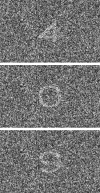The Consortium on the Genetics of Schizophrenia: neurocognitive endophenotypes
- PMID: 17101692
- PMCID: PMC2632287
- DOI: 10.1093/schbul/sbl055
The Consortium on the Genetics of Schizophrenia: neurocognitive endophenotypes
Abstract
The Consortium on the Genetics of Schizophrenia (COGS) is a 7-site collaboration that examines the genetic architecture of quantitative endophenotypes in families with schizophrenia. Here we review the background and rationale for selecting neurocognitive tasks as endophenotypic measures in genetic studies. Criteria are outlined for the potential of measures as endophenotypic vulnerability markers. These include association with illness, state independence (ie, adequate test-retest stability, adequate between-site reliability, impairments in patients not due to medications, impairments observed regardless of illness state), heritability, findings of higher rates in relatives of probands than in the general population, and cosegregation within families. The COGS required that, in addition, the measures be "neurocognitive" and thus linked to neurobiology and that they be feasible in multisite studies. The COGS neurocognitive assessment includes measures of attention, verbal memory, working memory, and a computerized neurocognitive battery that also includes facial processing tasks. Here we describe data demonstrating that these neurobehavioral measures meet criteria for endophenotypic candidacy. We conclude that quantitative neurocognitive endophenotypes need further evidence for efficacy in identifying genetic effects but have the potential of providing unprecedented insight into gene-environment interaction related to dimensions of brain and behavior in health and disease.
Figures



References
-
- Harrison PJ, Weinberger DR. Schizophrenia genes, gene expression, and neuropathology: on the matter of their convergence. Mol Psychiatry. 2005;10:40–68. - PubMed
-
- Owen MJ, Craddock N, O'Donovan MC. Schizophrenia: genes at last? Trends Genet. 2005;21:518–525. - PubMed
-
- Bleuler E. Dementia Praecox or the Group of Schizophrenias. New York, NY: International Universities Press; 1950.
-
- Green MF, Kern RS, Braff DL, Mintz J. Neurocognitive deficits and functional outcome in schizophrenia: are we measuring the “right stuff”? Schizophr Bull. 2000;26:119–136. - PubMed
Publication types
MeSH terms
Substances
Grants and funding
LinkOut - more resources
Full Text Sources
Medical

